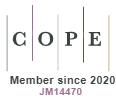Manual support in shoulder girdle increases coactivation during gait training of children with cerebral palsy
DOI:
https://doi.org/10.5585/conssaude.v11n2.2947Keywords:
Cerebral palsy, Child, Muscle spasticity, Therapeutical approaches.Abstract
Introduction: No studies were found that examined different therapeutic strategies used as a resource in gait training for children with cerebral palsy. Objectives: To compare the level of activity and muscle coactivation of the tibialis anterior and medial gastrocnemius during two strategies used during gait training: walking with walker use and walking with manual support on the scapular waist. Methods: We evaluated five children with cerebral palsy. The spasticity degree of children was evaluated by the Modified Ashworth Scale. The myoelectrical signals were analyzed by calculating the magnitude of electromyographic activity and the co-contraction index. Results: During the gait training with manual support on the scapular waist was a significant increase (p <0.05) in electromyographic amplitude of the medial gastrocnemius muscle and the index of coactivation, compared to walking with walker. Conclusions: The walker seems to be a good gait training strategy for children with cerebral palsy.Downloads
Download data is not yet available.
Downloads
Published
2012-07-11
How to Cite
1.
Ries LGK, Piucco EC, Martinello M. Manual support in shoulder girdle increases coactivation during gait training of children with cerebral palsy. Cons. Saúde [Internet]. 2012 Jul. 11 [cited 2024 Dec. 22];11(2):345-52. Available from: https://periodicos.uninove.br/saude/article/view/2947
Issue
Section
Cases studies
License
Copyright (c) 2012 ConScientiae Saúde

This work is licensed under a Creative Commons Attribution-NonCommercial-ShareAlike 4.0 International License.






